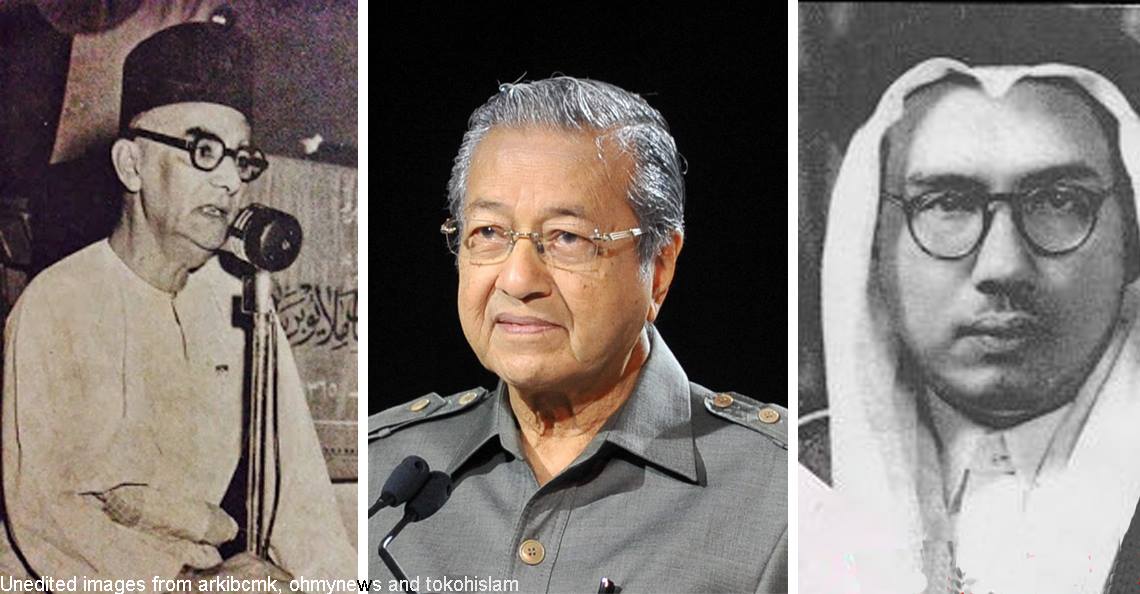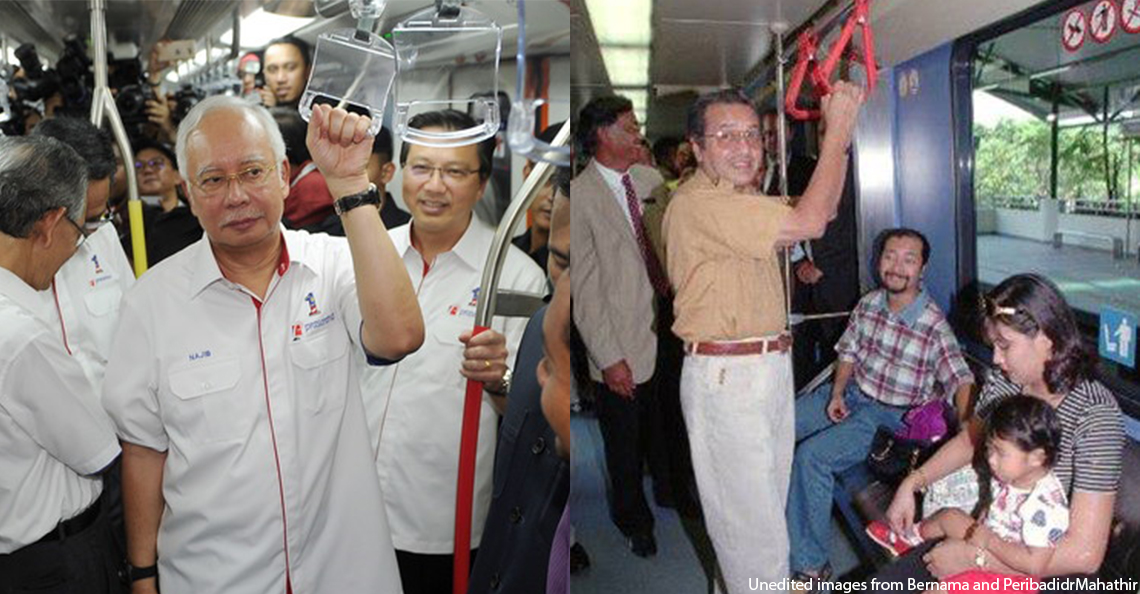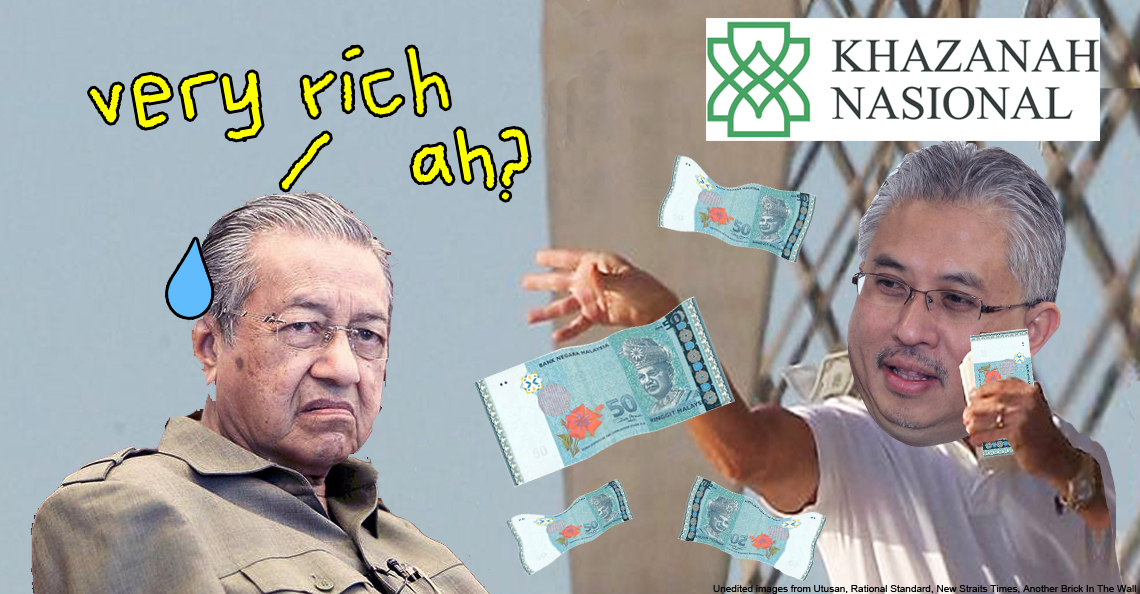The Sabah Riots of 1986: How & Why it Happened
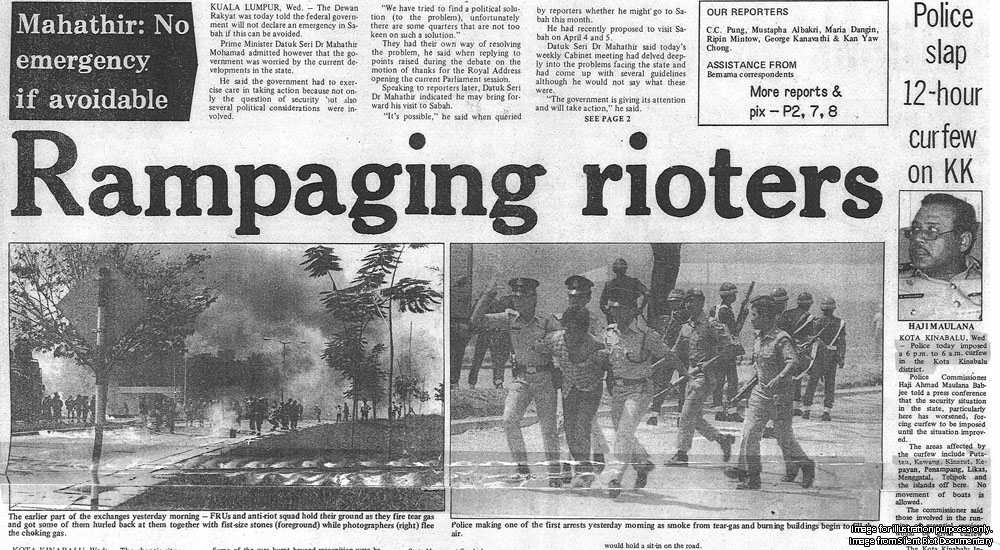
- 109Shares
- Facebook76
- Twitter8
- LinkedIn6
- Email7
- WhatsApp12
Some 37 years ago, Sabah saw a pretty serious series of riots. How serious you ask? Well, the New York Times described the 1986 Sabah Riots thusly…
“More than two dozen b0mbings and fatal fires have left five people dead and many wounded. There have been mass demonstrations and tear gas attacks on mobs bearing placards promising death to political leaders and whole ethnic groups.” – excerpt from New York Times, 21 March 1986.
Right about now, you’re probably wondering why you haven’t heard of this before. Even though we’re not entirely sure ourselves, it might come down to the fact that Sabah’s Silent Riot wasn’t taught to us in school, unlike the May 13 incident, which is odd given the levels of violence that occurred. In fact, this writer only found out about it from the r/Malaysia subreddit. In any case, we think the story is worth telling cuz it led to the Sabah we know today.
The whole thing started when…
BN lost the 1985 Sabah state elections, and they couldn’t handle that
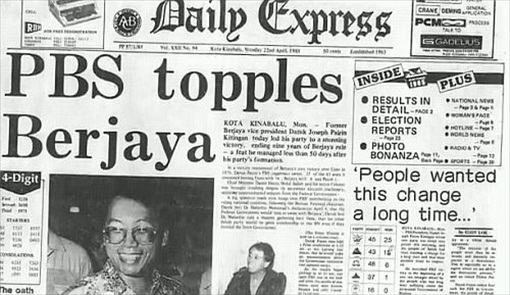
Let’s set the scene for a bit of context. Up till 1985, Sabah’s ruling government had always been a BN-affiliated party. There was USNO, who governed the state from its first state election in 1967 to 1976. After that, BERJAYA, a party founded by some USNO members, took over.
Entering the 1985 state elections, however, was a new challenger: Parti Bersatu Sabah (PBS). Founded by ex-BERJAYA member, Joseph Pairin Kitingan, PBS was built different – they represented Kadazans, Christians and other non-Muslims, as opposed to USNO and BERJAYA which catered to the indigenous Muslims, with BERJAYA being described as a ‘Malay, Moslem state government’.
Being new kids on the block, this seemingly put them at an overwhelming disadvantage. PBS was formed a mere 47 days before the elections, and it went up against the more established BERJAYA and USNO party. With inordinate media – and federal government – backing that went into these two parties, it was obvious that the playing field was uneven. This led former Prime Minister Tunku Abdul Rahman to say:
“Nothing is said about the opposition, nor are they given a chance to defend themselves… Democracy, as I understand it, is being severely mauled and mangled out of shape…” – Tunku Abdul Rahman, as quoted by K. Ramanathan Kalimuthu (1986).
Despite this, PBS managed to come out victorious, winning a clear majority of 25 out of 45 seats. On the other hand, USNO won 16, and BERJAYA, which everyone was sure would win, only managed to get 6. Once the results became clear, BERJAYA tried to grab power back. Their plan was simple:
- Form a coalition with USNO
- Have one of them be Chief Minister who would appoint all 6 BERJAYA winners as assemblymen
- Vote USNO out A.S.A.P.

Tun Mustapha, USNO’s leader at the time, raced to Sabah State Palace to be sworn in as Chief Minister of Sabah in the span of a night even though none of the state governor’s advisors agreed to it. Some reports even called the politician’s move a ‘coup’. Naturally, Kitingan and PBS soon learned of this, and they called up the federal government to complain. Datuk Musa Hitam, then acting Prime Minister and BN chairman, had then issued a statement:
“Whatever is happening in Sabah following the election results is not in the name of Barisan Nasional, as Berjaya which stood on the Barisan’s ticket, only secured six of the 48 seats it contested…” – Datuk Musa Hitam, as quoted by K. Ramanathan Kalimuthu (1986).
Having lost the election and the support of BN, Tun Mustapha’s swearing in was revoked. Kitingan entered office on 23 April 1985, and all was well, until…
The Sabah Riots broke out and Kitingan had to face a lawsuit
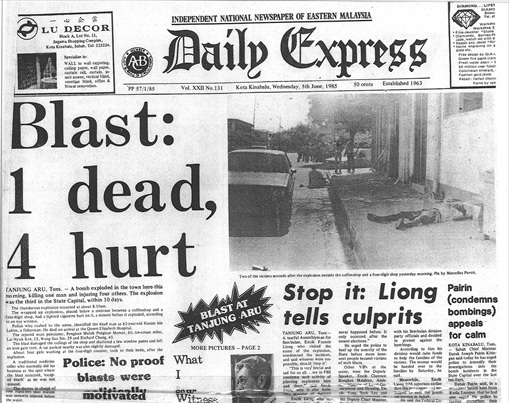
Kitingan’s first year as Chief Minister was… challenging, to say the least. On one hand, Tun Mustapha initiated what would become an 11-month long court battle claiming that Kitingan’s appointment was unconstitutional. On the other, riots and demonstrations started popping up in Kota Kinabalu, which later spread towards nearby Tawau and Sandakan.
Literal fish b0mbs were set off randomly at various public places, like petrol stations and shops. It’s widely believed that these attacks were orchestrated by radical USNO and BERJAYA people, with Muslim Filipino refugee recruits actually executing the b0mbings for them. Supposedly, certain UMNO factions who wouldn’t accept a non-Muslim led Sabah government were also supporting these assaults.
Initially, incidents were sparse, but after PBS refused to form a coalition government with USNO and BERJAYA (more on that later), things got worse.

Arson and fervent mobs became commonplace, but perhaps in a more sinister fashion, there were efforts to turn Sabahans against each other. One way this was done was by housing the refugees/demonstrators with their families at the state mosque and painting two huge crosses on the walls with red paint, with messages of Kitingan and PBS being anti-Islam being put up in the surrounding area.
A political issue had been made into a religious one. It appeared that Christians were made out to be the ones who incited the violence:
“You want to know my honest opinion? It was done by the Muslims. Some mosques were burned – there was one in Kota Belud, my own kampung. I know who did it. It was not done by the Christians. Just to incite that feeling… from a political problem, they want to equate it to a religious problem.” – Datuk Hj Mat Noor Mansoor, former Sabah Minister of Finance, quoted from “The Silent Riot” by Nadira Ilana.
In response to the mayhem, the police implemented a curfew from dusk to dawn, and parents stopped sending their kids to school. Words alone can barely begin to capture the what-the-hecc-ness of it all, so if you have half an hour to spare, we highly recommend watching this documentary which had interviews with Sabahan politicians who were active during the era:
As the fires – literal and metaphorical – were raging across Sabah, pressure was mounting on Kitingan more than it had already, cuz…
Tun M tried to persuade Kitingan to form a coalition (again) with USNO and BERJAYA
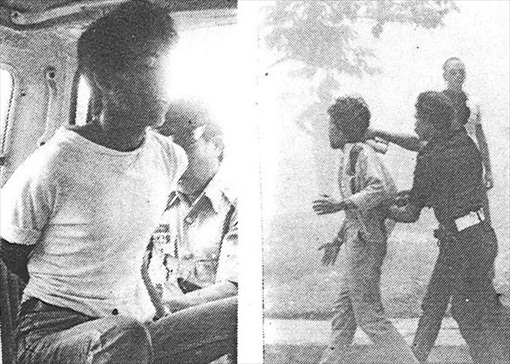
Tun Mahathir himself had been said to be present at Kota Kinabalu in the midst of the mayhem, and he had tried to convince PBS to go along with his plan – the tackily named ‘Sabah formula’. This would have involved PBS, USNO and BERJAYA forming a coalition government without a new election, Kitingan staying Chief Minister, and PBS joining BN and helming the Sabah faction of BN.
USNO and BERJAYA predictably agreed to this plan readily, but PBS was like:
PBS insisted on holding another election to ensure Sabah’s government was truly legitimate, and undeterred by the federal government’s attempts in preventing another poll from happening, one was held anyway in May 1985, only a month after the initial election. And much to the chagrin of USNO and BERJAYA, the people’s voice was clear – PBS won an emphatic 34 seats, which included all of the Kadazan-majority and most of the Chinese majority seats. USNO, meanwhile, won 27, and BERJAYA had to be satisfied with one measly seat.
With the victory, an anti-hopping law was put into place, but in a weird turn of events, PBS eventually joined BN as a component party in 2002 as Kitingan stated that ‘the time has come to work together in the larger interest of the country and the people’. While this wasn’t the end of PBS’s tussle with the federal government, that’s another story for another day, and after:
- 34 b0mbs
- 20 arson cases
- 56 b0mb threats
- 73 destroyed cars
- 1,763 people arrested
- 5 deaths
- An estimated $10 million (more than RM40 million) in damages throughout the state which no one took responsibility for; and
- Months of Sabahans suffering for no apparent reason but a few politicians throwing a temper tantrum
…the Silent Riots came to a close.
In the following years, PBS would go on to constantly voice the aspirations of Sabahans instead of being content with being ‘subordinate’ to the federal government, and this emphasis on autonomy is something we’re still seeing from Sabah’s government today.
- 109Shares
- Facebook76
- Twitter8
- LinkedIn6
- Email7
- WhatsApp12


